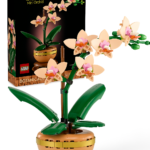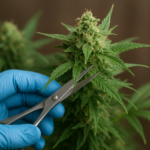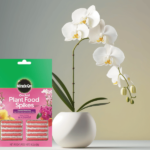Happy Bean plants are renowned for their vibrant green leaves and charming appearance, bringing joy to plant enthusiasts. However, the sight of a Happy Bean plant turning black can be disheartening for any plant lover. However, the disheartening sight of a Happy Bean plant turning black can leave even the most experienced gardeners perplexed. In this article, we embark on a journey to unravel the mysteries behind this phenomenon.
In this article, we delve into the reasons behind this phenomenon, offering insights into the causes, diagnosis, and steps for nursing your blackened Happy Bean plant back to health.
Understanding Happy Bean Plants

Happy Bean plants, scientifically known as Castanospermum australe, hail from Australia, captivating plant enthusiasts with their unique features and resilience. These charming plants boast vibrant green leaves and a distinctive appearance, making them popular choices for indoor and outdoor settings. To cultivate a thriving Happy Bean, understanding their specific needs is paramount. These plants flourish in well-draining soil, requiring indirect sunlight for optimal growth. Their hardiness and adaptability contribute to their allure, making them suitable for both novice and experienced gardeners.
By delving into the characteristics and ideal conditions for Happy Bean plant growth, enthusiasts can establish a solid foundation for nurturing these delightful plants. With a comprehensive grasp of their requirements, fostering a healthy and vibrant Happy Bean becomes an attainable and rewarding endeavor for plant lovers.
Ideal conditions for Happy Bean plant growth
Happy Bean plants thrive in specific conditions that mimic their native Australian habitat. To ensure optimal growth and vibrant health, it’s crucial to create an environment that caters to their unique needs.
First and foremost, Happy Bean plants prefer well-draining potting soil. This prevents soggy conditions, which can lead to root rot—a common issue that compromises their health. Aim for a soil mix that allows water to pass through easily, striking a balance between moisture retention and drainage.
In terms of sunlight, Happy Beans flourish in indirect light. While they can tolerate some direct sunlight, prolonged exposure to intense rays may result in sunburn and leaf discoloration. Placing them in locations with filtered or dappled sunlight is ideal, providing the perfect balance for their photosynthetic needs.
Maintaining a moderate temperature is essential. Happy Beans favor a temperature range between 65°F to 75°F (18°C to 24°C). Avoid exposing them to sudden temperature fluctuations, as they are sensitive to extreme cold or heat.
Regular watering is essential, but it’s crucial to allow the top inch of soil to dry out between waterings. Overwatering can lead to root issues, while underwatering may cause stress. Striking this balance ensures the Happy Bean plant receives adequate hydration without the risk of drowning its roots.
Signs of a Healthy Happy Bean Plant
Ensuring a Happy Bean plant’s well-being involves recognizing key signs of its health and vitality. Here are indicators that your Happy Bean is thriving:
Vibrant Green Leaves:
- Healthy Happy Bean plants exhibit leaves with a vibrant green color.
- Lush foliage suggests that the plant is receiving sufficient nutrients and light for robust photosynthesis.
Sturdy Stems and Upright Growth:
- Solid and sturdy stems are a sign of a well-supported and structurally sound plant.
- Upright growth indicates that the Happy Bean is getting adequate light, promoting proper development.
Regular Flowering and Fruiting:
- A flourishing Happy Bean plant consistently produces flowers and, subsequently, fruits.
- Regular flowering is indicative of a healthy reproductive cycle and overall plant vigor.
To know more About Happy Bean Plant Read : happy bean plant care
What is wrong with my happy bean plant to turn it black?

If you’ve noticed your Happy Bean plant turning black, several factors could be contributing to this issue. Let’s explore potential reasons and solutions:
Overwatering and Root Rot:
- Symptoms: Blackening of leaves, especially at the base.
- Solution: Adjust your watering frequency. Allow the top inch of soil to dry out between waterings, and ensure the pot has proper drainage.
Fungal Infections:
- Symptoms: Black spots, discoloration, or a fuzzy appearance on leaves.
- Solution: Improve air circulation around the plant, provide adequate spacing, and use organic fungicides as directed.
Sunburn and Excessive Sunlight:
- Symptoms: Leaves turn black, especially if the plant is suddenly exposed to intense sunlight.
- Solution: Provide shade during peak sunlight hours or gradually acclimate the plant to brighter conditions.
Pests and Diseases:
- Symptoms: Visible pests or signs of disease, such as wilting or unusual spots.
- Solution: Inspect the plant for pests, use natural pest control methods, and isolate infected plants to prevent the spread of diseases.
Root Issues and Soil Problems:
- Symptoms: Unhealthy roots or soil that retains too much moisture.
- Solution: Check the roots for signs of rot, trim affected parts, and repot the plant if necessary using well-draining soil.
Nutrient Deficiency:
- Symptoms: Discoloration and blackening of leaves, especially if it starts from the edges.
- Solution: Provide a balanced, water-soluble fertilizer to address any nutrient deficiencies.
Temperature Stress:
- Symptoms: Sudden exposure to extreme temperatures can lead to leaf damage.
- Solution: Maintain a consistent temperature range and protect the plant during temperature fluctuations.
Disease Spread:
- Symptoms: Blackening spreads from one plant to another.
- Solution: Isolate infected plants, treat them promptly, and ensure proper sanitation to prevent disease spread.
To determine the specific issue affecting your Happy Bean plant, carefully examine the plant for visible signs and consider recent changes in care routines or environmental conditions. Once identified, take appropriate corrective measures based on the outlined solutions. Regular monitoring and a proactive approach to plant care will contribute to the recovery and ongoing health of your Happy Bean plant.
Addressing Overwatering and Root Rot
Adjusting Watering Frequency:
Overwatering is a common cause of Happy Bean plant issues. Adjust your watering schedule, allowing the top inch of soil to dry between waterings. This prevents soggy conditions and promotes healthy root function.
Improving Soil Drainage:
Enhance soil drainage by incorporating perlite or sand into the potting mix. Well-draining soil helps prevent water accumulation, mitigating the risk of root rot and blackening.
Pruning Affected Roots:
If root rot is evident, carefully prune affected roots. Trim away dark, mushy sections and ensure the remaining roots are healthy. Repot the plant if necessary, using fresh, well-draining soil.
Combating Fungal Infections
Proper Ventilation and Air Circulation:
Increase airflow around the Happy Bean plant by placing it in a well-ventilated area. Good air circulation reduces humidity, creating an environment less favorable for fungal growth.
Organic Fungicides and Treatment Options:
Utilize organic fungicides to treat fungal infections. Neem oil and copper-based solutions are practical and environmentally friendly. Follow product instructions for application and dosage.
Preventing Sunburn and Sunlight Issues
Providing Shade During Intense Sunlight:
Shield your Happy Bean from direct sunlight during peak hours. Use a shade cloth or move the plant to a location with filtered light to prevent sunburn and leaf blackening.
Gradual Acclimatization to Sunlight:
When moving the plant to a sunnier spot, acclimate it gradually. Exposing it to increasing sunlight over several days prevents shock and minimizes the risk of sunburn.
Dealing with Pests and Diseases
Natural Pest Control Methods:
Employ natural remedies like neem oil or insecticidal soap to control pests. These methods effectively manage infestations without harming the plant or the environment.
Introducing Beneficial Insects:
Introduce beneficial insects such as ladybugs or predatory mites. These natural predators help keep pest populations in check, contributing to a healthier Happy Bean.
Isolating and Treating Diseased Plants:
Isolate infected plants to prevent the spread of diseases. Treat affected plants promptly with suitable fungicides or remedies, ensuring the disease doesn’t compromise the entire collection.
Nursing a Blackened Happy Bean Plant Back to Health

Trimming Affected Leaves and Stems:
Carefully trim blackened leaves and stems to encourage new growth. Use clean, sharp scissors or pruning shears, ensuring a neat cut to minimize stress on the plant.
Fertilizing for Recovery:
Apply a balanced, water-soluble fertilizer to support recovery. Choose a formulation with equal N-P-K ratios to provide essential nutrients for overall plant health.
Monitoring Progress and Making Adjustments:
Regularly monitor the plant’s progress. Adjust care routines based on their response, whether it’s new growth, improved color, or increased vitality. Flexibility in care is critical to successful rehabilitation.
Tips for Happy Bean Plant Maintenance
Regular Pruning and Shaping:
Schedule regular pruning sessions to maintain a desired shape and remove dead or damaged growth. This encourages bushier, healthier Happy Bean plants.
Adequate Watering and Soil Nutrition:
Balance watering to keep the soil consistently moist but not waterlogged. Incorporate a balanced fertilizer during the growing season to ensure optimal soil nutrition.
Pest Prevention Measures:
Implement preventative measures to deter pests. Regularly inspect the plant, use natural repellents, and maintain a clean environment to minimize the risk of infestations.
Conclusion
In conclusion, witnessing a Happy Bean plant turning black may be disheartening, but with the proper knowledge and prompt action, recovery is possible. By addressing the specific causes, implementing corrective measures, and maintaining a proactive approach to plant care, you can bring joy back to your Happy Bean plant.
FAQs
Can I save my Happy Bean plant if it has turned completely black?
- Yes, in many cases, with the proper care and attention, a blackened Happy Bean plant can be nursed back to health.
How often should I water my Happy Bean plant to prevent overwatering?
- Watering frequency depends on various factors such as climate and soil type. It’s crucial to let the top inch of soil dry out between waterings.
Are there specific signs of pest infestation on Happy Bean plants?
- Look for unusual spots, discoloration, or distorted growth on the leaves. Also, check the undersides of leaves for any signs of pests.
Can I use chemical pesticides on my Happy Bean plant?
- While it’s possible, it’s recommended to try natural and organic pest control methods first to avoid harming the plant.
How long does it take for a blackened Happy Bean plant to recover?
- The recovery time varies, but consistent care and proper treatment can yield positive results within







